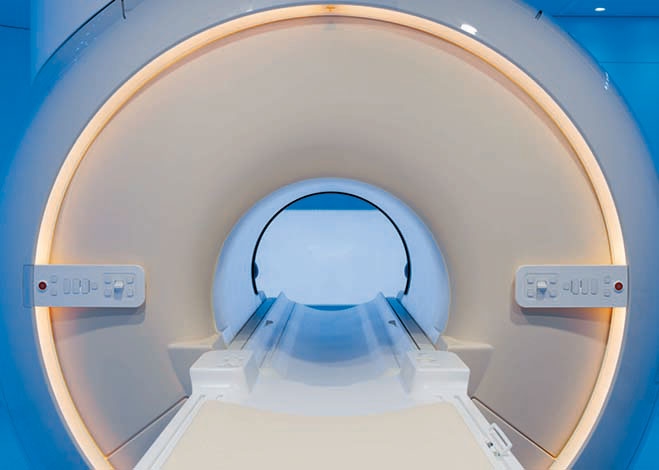
How MRIs Help Us Take a Closer Look
A clear picture
Magnetic resonance imaging, or MRI, is a technology that uses magnetic fields to produce detailed images of the soft tissues in the body, including organs, blood vessels and lymph nodes. Providers use MRIs to visualize and diagnose cancerous or benign tumors, heart and vascular conditions, liver disease and more. An MRI scan is noninvasive and does not use radiation, making it a comfortable option for high-quality images of the body.
My doctor ordered an MRI — what should I expect?
When your provider recommends an MRI, he or she will give you guidance on how to prepare, including whether you can eat or drink before the procedure. Be sure to mention any medications you are taking and any medical devices or implants you have in your body, including implanted hearing devices, pacemakers and artificial joints.
When it’s time for your scan, you will dress in a hospital gown and lie on the exam table. The MRI technologist will place metal coils on or near the part of your body that will be scanned and then move the table into the tube. As the technologist runs the scan, all you have to do is be still and relax — you’ll be done in no time!
Revolutionary MRI in Ukiah
If you have an MRI scheduled in Ukiah Valley, you get to experience the latest imaging technology with a new MRI scanner. The tube in the MRI machine, made by GE Healthcare, has a larger circumference than standard machines, making it a better option for larger patients and those who have a fear of confined spaces. It also uses new technology that shortens the time it takes to do a complete scan and provides clearer image quality.
“This new technology is a huge win for our community, our physicians and our technologists,” says Honalee Newman, director of diagnostic imaging at Adventist Health Ukiah Valley. “As MRI is quickly becoming a standard for surgeons and ER doctors to develop care plans for their patients, it is important to have a scanner that can accommodate larger patients and scan more people per day.”



